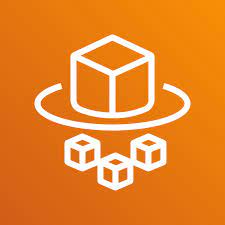AWS Cost Optimization: Best Practices and Management Tools
Cloud cost optimization is vital considering most businesses are embracing Cloud solutions to deliver high-quality services while maintaining operational cost efficiency.
Join the DZone community and get the full member experience.
Join For FreeCloud solutions, such as Amazon Web Services (AWS), are an integral part of every modern technology stack. But, as helpful as they may be, they can become costly if not properly managed. Essentially, Cloud service providers have a granular pricing structure and charge users for individual services such as storage, IO operations, and compute instances, just to name a few.
For new users unfamiliar with Cloud computing, the struggle to manage their usage is common, and the effect is higher costs. In fact, 82% of US companies acknowledge that managing costs is their biggest Cloud challenge, according to Flexera’s 2023 State of the Cloud Report.
Therefore, Cloud cost optimization is vital, considering most businesses are embracing Cloud solutions to deliver high-quality services while maintaining operational cost efficiency.
This article explores the AWS cost optimization best practices that will help you keep your expenses in check.
What Is AWS Cost Optimization?
Cost optimization refers to the ability to run systems to deliver business value at the lowest price point. AWS cost optimization involves monitoring and analyzing your Cloud resource usage, identifying opportunities to reduce costs, and implementing recommended actions.
AWS Cost Optimization Best Practices
Know Your Needs
Different projects have different resource requirements, which must be optimally selected. Some applications may be processing intensive and require a high-powered CPU, while others may need a large RAM size.
Before picking a Cloud Instance, you must thoroughly research your requirements and browse the available options. For example, the AWS EC2 Instances are available in different capacities and prices ranging from $0.0042/hr for the t4g.nano to over $100/hr for the u-12tb1.112xlarge.
Opting for unnecessary high-power computing resources may not benefit your application. Instead, it will leave you with a large bill. Examples of resource requirements in this context include:
- CPU
- RAM Size
- Storage Space
- Network
To optimize your AWS Cloud costs, always choose optimal resources that are powerful enough to run operations smoothly and handle unanticipated traffic loads but not unnecessarily high-end and expensive.
Opt For Reserved Instances and Savings Plan
AWS on-demand Cloud instances are billed per hour, which means if the usage is extensive, the total cost can lead to budget overruns. For long-term usage, AWS offers EC2 Reserved Instances. These are the same as on-demand instances but reserved for a fixed amount of time at a discounted price.
Essentially, you pay the amount of the entire term at a lower cost as compared to the total cost of on-demand usage. You can find all the available AWS Instances and their prices in this list.
However, even the discounted cost of a Reserved Instance can become substantial if not used as anticipated, which is why embracing AWS cost optimization best practices is crucial.
Another key point to highlight is that you can sell your Reserved Instances on the AWS marketplace. The Instance is sold according to the remaining contract duration and hourly rate; once sold, you lose all ownership rights.
Stop/Delete Unused Resources
On-demand EC2 Instances are billed at an hourly rate, and the cost increases as long as the Instance runs. New users can often leave their Cloud Instances running for hours without any use mistakenly, causing unnecessary bills to pile up.
To achieve the required AWS cost optimization, be sure to terminate the instance when it is no longer required to control the costs.
Furthermore, each EC2 Instance has an Elastic Block Storage (EBS) attached to it upon creation. Your EBS costs depend on the amount of storage you use, as well as the input/output operations. If you do not implement this AWS cost optimization best practice, billing for your EBS units can continue even after you terminate the EC2 Instance.
For this reason, always ensure that you check the “delete on termination” checkbox for EBS when the Instance is created, or manually delete the storage unit when no longer needed. Also, check for unneeded storage blocks that might add to the cost and deallocate them.
Optimize Auto Scaling Groups
AWS offers a dynamic cluster of EC2 Instances known as the Auto Scaling Group (ASG). ASGs are beneficial when dealing with unexpected workloads as they scale up automatically to match the requirements. Once the load drops to normal, the group scales down to its default configuration.
ASGs are useful at times but, if not properly configured, can lead to huge AWS Cloud costs. When experiencing workload surges, ASG can increase abruptly to an unnecessary size, causing a spike in hourly charges.
The AWS cost management best practice here is to manually experiment with the minimum and maximum resources you will ever require based on your user base and application growth.
Once you map out these, you can then configure the nodes according to your requirements. This can be tiring but it’s one of the most effective AWS cost optimization strategies from a long-term perspective.
Define User Permissions and Quotas
When working with a substantial team, you can never be too sure of how responsible everyone is when handling Cloud services. Team members may mistakenly or unnecessarily initiate high-powered virtual computers and leave them running for long periods, which may end up draining your budget while this virtual machine is not being used up to its optimum potential.
To address this challenge, AWS provides the functionality to define permission boundaries for different users. Consequently, the AWS cost optimization best practice, in this case, is to define which users are authorized to invoke new Instances or even set individual spending quotas.
Use AWS Cost Management Tools
Sometimes, manual AWS cost management efforts can fall short. Consequently, it is advisable to rely on external help for budget planning and management. AWS and several other third-party solutions provide amazing AWS cost optimization tools that address your unique needs.
With that being said, let’s look at some of the AWS cost optimization tools that you can leverage to plan your Cloud budget, identify cost leaks, and visualize the spending patterns.
Top AWS Cloud Cost Management Tools

AWS Budgets
AWS Budgets is a native Amazon tool that helps track Cloud services and their spending. It also allows you to set an upper limit for your cloud spending and automatically issues an alert when the costs go overboard. These alerts allow you to take action before facing any significant damage.
You can also set custom actions to be triggered automatically (or via authorization) when the budget threshold is crossed, such as halting EC2 Instances. Furthermore, the AWS Budgets tool gives you spending forecasts, which is vital in achieving AWS cost optimization as it facilitates better usage planning.

AWS Cost Anomaly Detector
The anomaly detector uses machine learning to understand your spending patterns and then looks for unusual costs. This is particularly helpful when you mistakenly leave an Instance running overnight because the anomaly detector will issue an alert for you to take action.

AWS Pricing Calculator
The pricing calculator gives you a detailed estimate of the monthly costs of all the services you wish to utilize. The calculator shows all additional costs associated with a particular service, such as region, elastic IPs, or storage units (EBS) that’ll be attached to an EC2 Instance.
This transparency ensures you have no hidden costs and can plan your budgets accordingly.

Kubecost
AWS and Kubecost recently collaborated to provide cost monitoring of the Kubernetes cluster on the Elastic Kubernetes Service (EKS).
Kubecost gives you a more granular breakdown of the costs based on pods, nodes, services, and namespaces. With this capability, you get a better overview of spending and it allows you to optimize your usage accordingly.
The Kubecost integration with EKS is free but also has an enterprise version with added benefits, such as the ability to view cost histories for as long as 30, 60, or 90 days.

Infracost
Varying project requirements require constant changes to the infrastructure. At any time, you may need to increase the network bandwidth or have the clusters running for a more extended period. Infracost benefits your AWS cost optimization efforts by enabling you to estimate how a particular change to the infrastructure will impact the Cloud expenses.
Furthermore, it monitors your IaC configurations and comments on the cost increase or decrease. This allows you to reevaluate the change based on your budget or preferably look for a better solution.

Spot.io
Spot.io Provides multiple cloud-related services such as intelligent auto-scaling, cost breakdown, and cloud usage optimization. Resource optimization automatically determines your requirements and optimizes the infrastructure to reduce costs.
Spot.io also provides a cost calculator to estimate how much you can save with your current configurations.
Conclusion
Spending a huge budget on AWS resources is a concern faced by enterprises. In this article, we outline some of the best practices and tools that help us with AWS Cloud cost optimization. It is important to note that the use cases vastly differ from one organization to another.
Consequently, it is recommended that you observe these principles regularly to reach an optimum cost of the infrastructure supporting any business service.
Published at DZone with permission of Anthony Neto. See the original article here.
Opinions expressed by DZone contributors are their own.

Comments